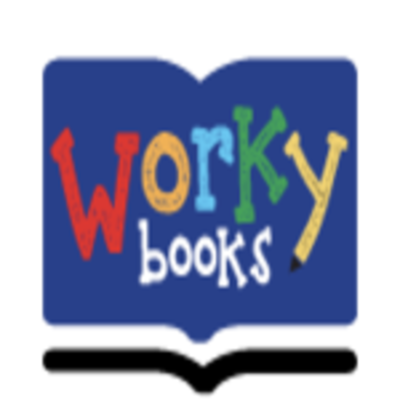Building Grammar Skills with First Grade Common and Proper Nouns
 Workybooks
WorkybooksNouns are one of the foundational grammar concepts introduced early in a child’s education. For first graders, understanding the difference between common and proper nouns is a crucial stepping stone toward building strong reading and writing skills. With interactive tools like worksheets, games, and exercises, students can explore grammar in a fun, engaging way.
This guide explores the importance of teaching nouns in the 1st grade, how it aligns with education standards, and how 1st Grade Common and Proper Noun Worksheets help make grammar learning easier and more enjoyable.
What Are Common and Proper Nouns?
At the 1st-grade level, nouns are introduced in two main forms: common nouns and proper nouns.
Common nouns refer to general people, places, things, or ideas. Examples: teacher, city, dog.
Proper nouns refer to specific names of people, places, or things. Examples: Mrs. Smith, New York, Buddy.
Understanding the distinction between the two helps children form complete, accurate sentences and enhances their writing clarity.
Why Nouns Matter in Early Education
Nouns are the building blocks of sentences. When children grasp how to use common and proper nouns correctly, they begin to write more descriptively and with more meaning. This development supports their reading comprehension, sentence structure, and vocabulary growth.
The CCSS.ELA-LITERACY.L.1.1.b standard specifically guides educators to help students use common, proper, and possessive nouns appropriately, making it an essential part of the first-grade grammar curriculum.
Making Grammar Fun with Worksheets
For many children, worksheets are a highly effective tool for reinforcing what they learn in the classroom. First grade Noun Worksheets are designed to be simple, colorful, and engaging, allowing students to identify and classify nouns in context.
These worksheets help with:
Recognizing nouns in sentences
Sorting common vs. proper nouns
Practicing capitalization rules for proper nouns
Applying grammar concepts in creative writing
By turning learning into an interactive experience, these worksheets build confidence and encourage independent thinking.
Introducing Possessive Nouns: The Next Step
Once children can differentiate between common and proper nouns, the next natural step is to explore possessive nouns. Possessive nouns show ownership, like in the sentence: This is Sarah’s book.
Learning to use possessive forms helps students better express relationships between nouns. The Possessive Nouns worksheets guide first graders through the basics of identifying and writing possessive forms, preparing them for more complex grammar in later grades.
Practice Makes Perfect: Fun Activities and Exercises
Possessive noun exercises don’t have to be boring. Activities like fill-in-the-blanks, sentence building, and word sorting make grammar hands-on. Try using a Write Possessive Nouns worksheet that challenges kids to turn regular nouns into possessive ones by adding apostrophes and "s."
You can also make grammar a game with group activities or puzzles. The Possessive Nouns Activity is perfect for reinforcing concepts while keeping kids motivated. One especially fun exercise is the Pie Possessive Noun activity, which uses delicious imagery to help learners understand ownership in a tasty context!
Tips for Parents and Teachers
Whether you’re teaching in a classroom or helping your child at home, here are a few tips for effective grammar instruction:
Use Real-Life Examples: Point out nouns during everyday activities (e.g., “Look at that dog—what’s his name?”).
Make It Visual: Charts, flashcards, and illustrated worksheets help children remember grammar rules.
Break It Down: Focus on one concept at a time—start with common nouns, then proper nouns, and finally possessive forms.
Practice Daily: Short daily exercises can greatly reinforce grammar concepts.
Praise Effort: Celebrate when students correctly use new grammar skills—it builds confidence and enthusiasm.
Why It Matters
Teaching proper grammar from a young age sets the stage for future success in reading, writing, and speaking. When students know how to use common and proper nouns—and even more advanced concepts like possessives—they are better prepared to express themselves clearly.
These skills also help with reading comprehension. Understanding who or what a sentence is about is essential for grasping the main idea and context of a story.
Conclusion:
Mastering nouns in 1st grade opens the door to confident writing and clearer communication. With the right worksheets, activities, and support, children can learn these concepts in a way that’s fun and easy to understand. Whether you're using a write Possessive Nouns activity or exploring the pie Possessive Noun worksheet, there are countless ways to bring grammar to life.
Explore more grammar-building tools and printable resources at Workybooks. And when your learners are ready for a fun challenge, check out the online Quizzes designed to test their understanding of reading and grammar skills. With consistency and creativity, your young learners will master nouns—and beyond—in no time!
Subscribe to my newsletter
Read articles from Workybooks directly inside your inbox. Subscribe to the newsletter, and don't miss out.
Written by
